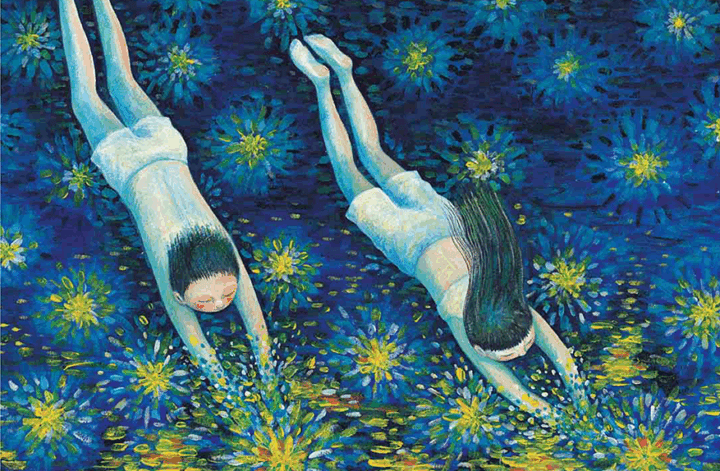Alison Lester began illustrating books in 1986, and just four years later her Imagine broke all sales records in Australia, becoming the number-one children’s bestseller. And I can completely understand why. To my taste, this is exactly how an educational, illustrated children’s book should be.
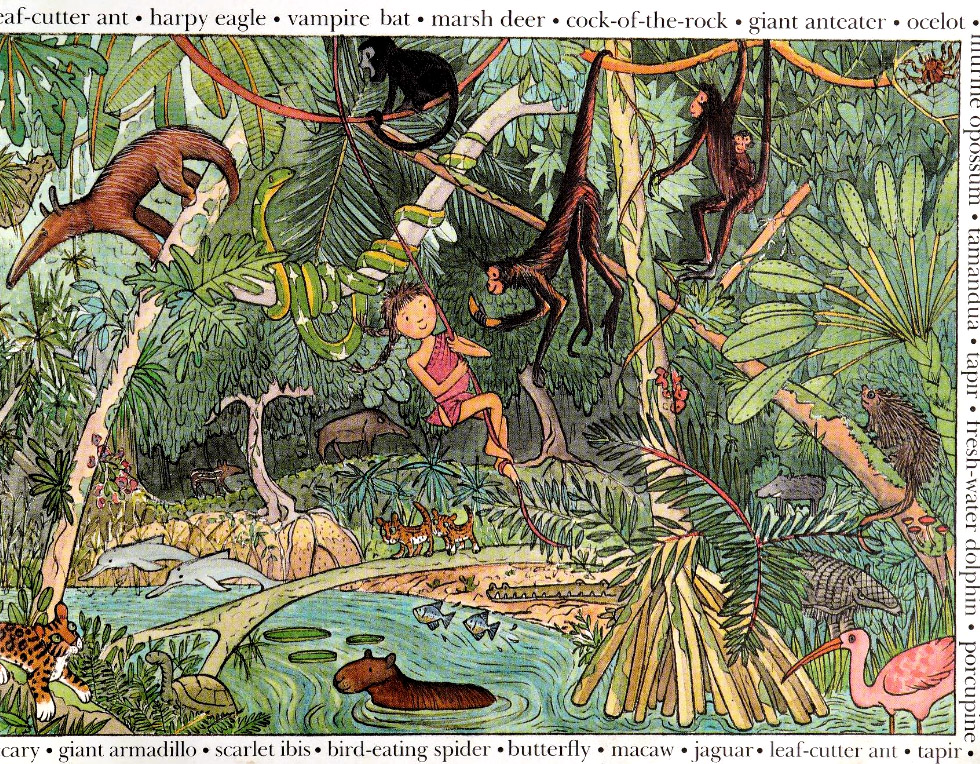
Lester seamlessly combines several techniques in one book. First, it’s a classic, timeless wimmelbook, where characters bustle and hide across each spread — and along the margins they are all listed by name, so you can find them one by one if you wish.
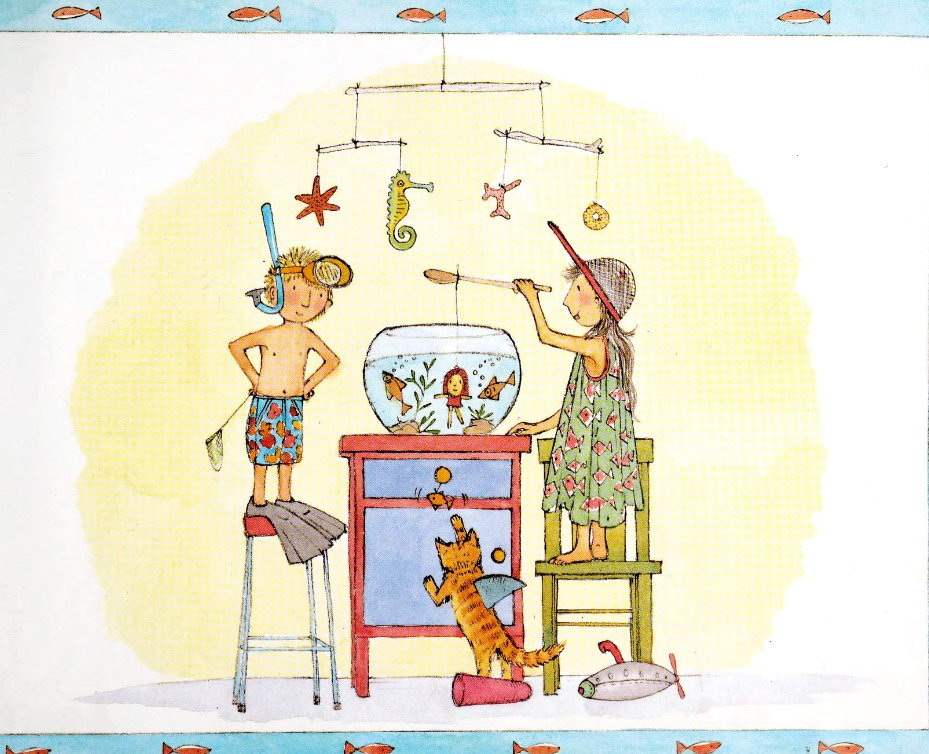
Second, it’s a story about children’s imagination, about how kids, in their play, enter invented worlds, bring them to life, and fill them with energy, mixing them with everyday reality. Lester uses this approach frequently in her books, encouraging and incorporating children’s creativity. She is, after all, a teacher by training and vocation, spending a lot of time with children and sometimes involving them directly. For example, in Sophie Scott Goes South, which came out of her Antarctic trip as part of the Australian Antarctic Arts Fellowship educational project, she incorporated children’s sketches and impressions inspired by her stories about the expedition.
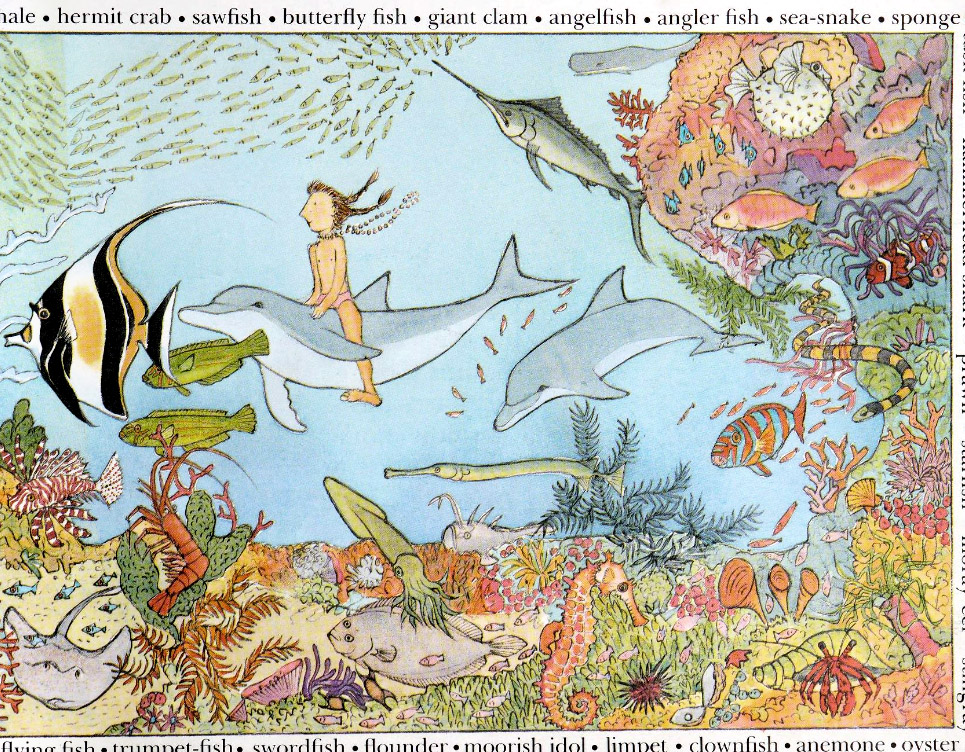
And Imagine is entirely built around this childlike “imagine…”. Each spread is introduced by a short rhyme: “Let’s imagine we’ve arrived in a land of monsters, where pteranodons dive and triceratopses smash everything, stegosaurs stomp and tyrannosaurs screech…” Using boxes and tape, children craft simple costumes — and in the next moment, they find themselves in the real prehistoric undergrowth.
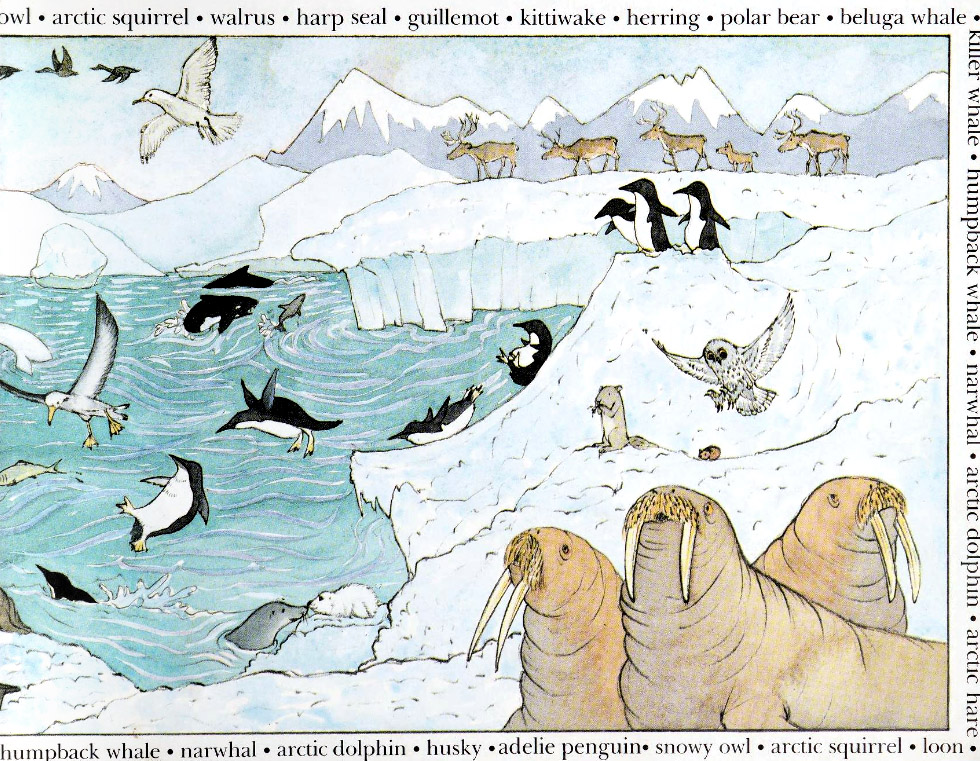
Third, and what I particularly love about this book, is that despite its small size and almost no accompanying text (apart from these short lines introducing each new imaginary adventure), Lester manages to fit several exciting worlds into one book — tropical jungles, the ocean floor, the North Pole, a farm, and a classic Australian landscape with its unique wildlife. And yet, Lester does more than create an engaging and educational story, a playful book, or a classic wimmelbook — she maintains a very important tone in a children’s book, tenderly soothing. After all the play and imaginary journeys, the children return home: “…let’s imagine we have a little house, with a cat in the bed, a rug on the floor, a lamp glowing in the night, and a dog sleeping by the door…”



